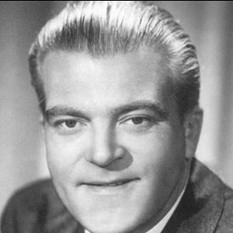
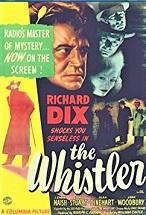 “I am the Whistler, and I know many things, for I walk by night. I know many strange tales, hidden in the hearts of men and women who have stepped into the shadows. Yes… I know the nameless terrors of which they dare not speak.”
“I am the Whistler, and I know many things, for I walk by night. I know many strange tales, hidden in the hearts of men and women who have stepped into the shadows. Yes… I know the nameless terrors of which they dare not speak.”
The Whistler (1942-55) aired “Career Man” on October 8, 1947 as the 281st of its 760+ (depending on how one counts) episodes. It is only the fourth episode of the show we have run, the past three coming two years ago in 2017 and the last in September of that year. For newcomers, introductory background material on the show is reprised below (it was the most popular west coast radio show for many years), with the background providing context for its not unique but unusual narrative format.
There were two attempts for The Whistler to break into the east coast market that didn’t last long (July-September 1946, and March 1947-September 1948) due to mediocre ratings, so if these episodes are counted as part of the overall scheme of things, the total number of shows ends up somewhere around 769. Over its thirteen-year west coast run it never took a summer break and ran continuously, certainly some kind of record, and its sole west coast sponsor, Signal Gas & Oil remained loyal throughout. While the show had several narrators over the years, the one who held the longest tenure and is most associated with the show was Bill Forman (photo top right).
The Whistler has an interesting backstory, and would take much too long to go into here to give it the justice it warrants. A few points of interest will suffice for this offering of the beloved mystery show, the first of which is the use of the narrator as more than just a host. From Jim Ramsburg’s Gold Time Radio entry on The Whistler: “Like The Shadow’s first personification a dozen years earlier, Inner Sanctum’s ghostly Raymond in 1941 and The Mysterious Traveler in 1943, The Whistler stood outside the stories he narrated. Unlike the others, he used a unique second-person, present tense technique as if to talk directly with the central character of his stories – often an innocent drawn into the plot by circumstances or an amateur driven to murder as a last resort.” A second point of interest has to do with the trademark whistling that opens each episode. From Radio Spirits‘ Blog Archive on The Whistler: “The program featured one of radio’s classic openings: a haunting 13-note theme created by Wilbur Hatch (who also composed the show’s eerie mood music). Hatch estimated that only one person in twenty could whistle this exact melody, and for the show’s thirteen-year duration one person pretty much did—a young woman named Dorothy Roberts. In fact, during the war years, Roberts had to get permission from Lockheed (where she worked) to leave her factory job in order to make it to the program and whistle every week.”
The radio show proved popular enough that Columbia Pictures made eight Whistler films from 1944-48, all but one starring Richard Dix: The Whistler (1944), The Mark of the Whistler (1944), The Power of the Whistler (1945), The Voice of the Whistler (1945), Mysterious Intruder (1946), The Secret of the Whistler (1946), The Thirteenth Hour (1947) and The Return of the Whistler (1948). The show was brought to early television in 1954-55, but never caught on. Nevertheless (and due in great measure to roughly 500 of the estimated 700+ original shows still surviving–and the movies still showing up on classic movie tv channels), The Whistler probably enjoys a larger audience today than it did in its heyday during the Golden Age of Radio.
“Career Man” tells the story of a desperate man attempting to save his career after he believes he has killed a man. Due to the circumstances surrounding the man’s death, our man decides to cover up his actions and allows guilt and paranoia to decide his future course of action, which of course leads to one horrible misstep after another. And one panic-fueled episode where the truth of the old adage* “..when first we practice to deceive…” proves its wisdom for one pathetic “Career Man.”
*The line “What a tangled web we weave, when first we practice to deceive,” first appeared in Sir Walter Scott’s 1808 historical romance (written in verse) Marmion: A Tale of Flodden Field.
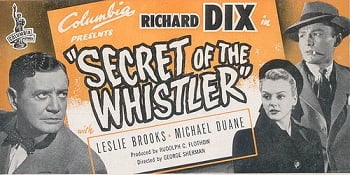
Play Time: 29:27
{October of 1947 found the neighborhood gang reading their favorite SF magazines while not listening to their favorite college or professional football games on the radio. Astounding (1930-present, now Analog) was always at the top of someone’s list, even with a more realistic cover like this one that featured (as the cover blurb indicated) Mercury in transit through the Sun’s orbit. Astounding was a monthly in 1947. Crack Detective (1938-57) would survive through no fewer than 8 title changes in its almost 20-year run. From 1943-49 it sported the title below, and in 1947 was a bi-monthly. Popular Detective (1934-53) was a hardy staple and maintained a relatively high level of fiction throughout its nearly 20-year existence. Of note in the issue below is the name of Sam Merwin, Jr. on the cover. Sam Merwin, Jr. (1910-1996) is more well known in SF circles than perhaps in the detective genre, though he penned more mystery fiction at short and novel lengths than he did science fiction. He also wrote romance stories under the pen name Elizabeth Deare Bennett. As for his SF credits (though he would write 70+ short stories and several novels), he is best known for editing Startling Stories and Thrilling Wonder Stories (1945-51), Fantastic Story Quarterly and Wonder Stories Annual (1950-51), Fantastic Universe (1953), and was an associate editor of Galaxy (1952-53). Popular Detective was a bi-monthly in 1947.]
[Left: Astounding, Oct. 1947 – Center: Crack Detective Stories, Oct. 1947 – Right: Popular Detective, Nov. 1947]

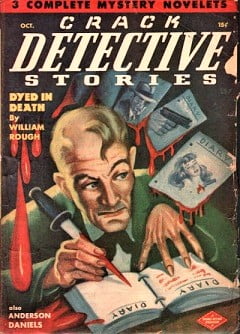
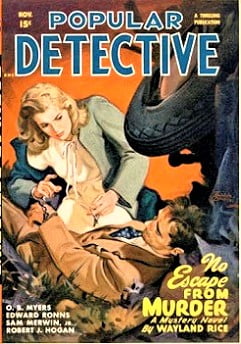
To view the entire list of weekly Old Time Radio episodes at Tangent Online, click here.